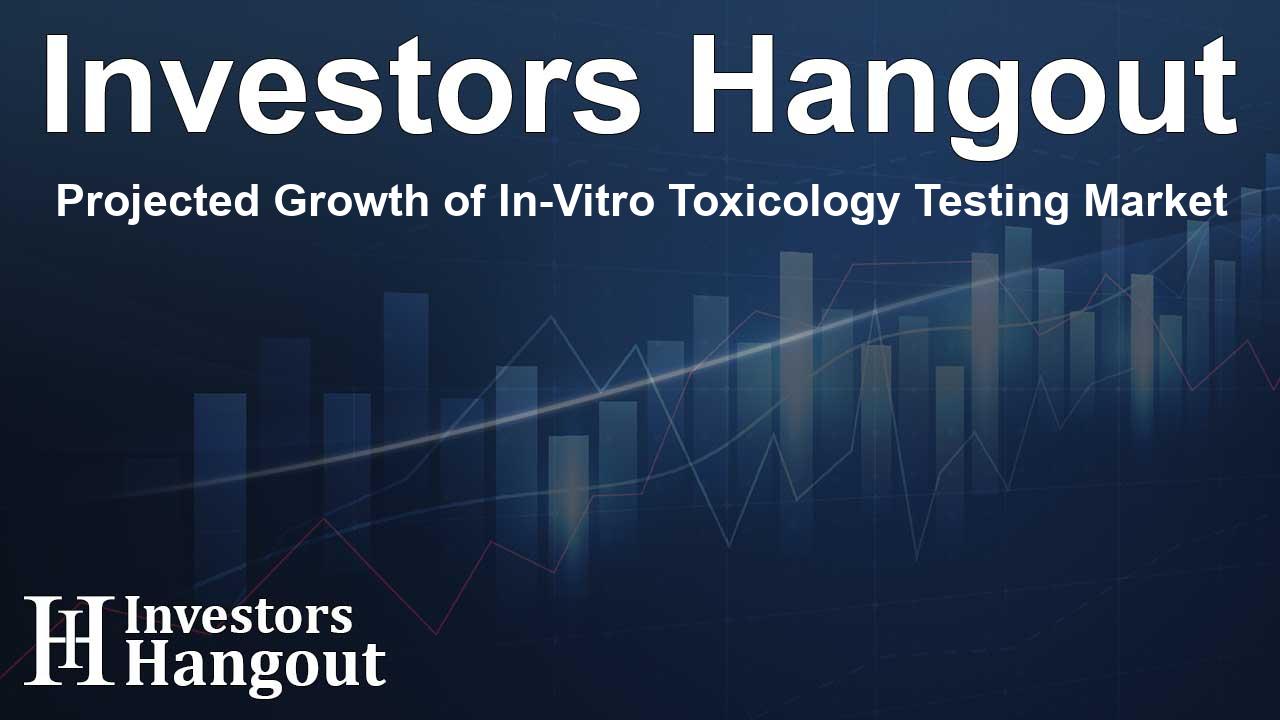Projected Growth of In-Vitro Toxicology Testing Market

Introduction to the In-Vitro Toxicology Testing Market
The in-vitro toxicology testing market is expected to see substantial growth in the coming years, with estimates predicting an increase from USD 12.99 billion to roughly USD 30.06 billion. This growth is being propelled by advancements in technology that allow for more accurate and humane testing methods in drug development.
Key Market Insights
Recent studies have assessed the in-vitro toxicology testing market, revealing that North America captured the largest share, accounting for more than 47% of the market in 2023. The innovative methodologies available for testing have been pivotal in this growth, fostering an environment where better assessment and lower costs drive the expansion.
Technology Trends
The cell culture technology segment dominated the market, contributing substantially to revenue due to its significance in drug development processes. The use of human-derived cultures reduces the reliance on animal testing, addressing ethical concerns and regulatory demands alike. As scientists strive to mimic the intricate biological processes of human cells more effectively, the market for in-vitro methods continues to bloom.
Methodologies in Focus
Cellular assays remain at the forefront of these methodologies, as they provide critical insights into the cytotoxic effects of new compounds, identifying potential risks associated with chemical exposures. Enhanced assay technology not only streamlines the testing process but also permits simultaneous testing on multiple samples, increasing throughput significantly.
Applications Driving Growth
The various applications of in-vitro toxicology, particularly in genotoxicity, exhibit promising growth prospects. This area alone captured nearly 21% of the market share in 2023, underscoring the critical role of safety assessments in regulatory compliance for new substances entering the market.
Significant Industry Opportunities
Recent endeavors by institutions, such as funding campaigns for innovative therapies in biotechnology, indicate a robust interest in harnessing in-vitro methodologies to alleviate healthcare challenges. Moreover, partnerships between global health organizations are focused on utilizing advanced computational methods to mitigate drug risks before entering the testing phase.
Regional Market Dynamics
In the United States, the in-vitro toxicology testing market size reached USD 4.99 billion recently and is projected to expand at a Compound Annual Growth Rate (CAGR) of over 10% through the next decade. This steady growth is influenced by renewed focus on improving health interventions and ensuring drug safety.
North America's Market Strength
The biopharmaceutical sector in North America remains pivotal in pioneering drug safety protocols. With continuous investments made into the realm of therapeutic innovations, it’s no wonder that North America will sustain its leadership within the in-vitro toxicology testing landscape. Strong regulatory frameworks, such as those set by the FDA, emphasize the importance of thorough toxicity evaluations before drug approval.
Emerging Trends in the Asian Markets
The Asia-Pacific region is rapidly becoming a hub for in-vitro testing, primarily driven by increased pharmaceutical investments and healthcare advancements. The region shows the quickest growth rates, led by China, contributing significantly amidst rising industrialization and demand for drug safety assessments.
India's Growing Pharmaceutical Landscape
India's pharmaceutical market is a key player in the global arena, notable for its remarkable output of generic medications and vaccines. Companies involved in API manufacturing are also investing heavily in in-vitro toxicology testing to ensure compliance with international safety standards, thus enhancing their competitive edge.
Conclusion and Future Outlook
The trajectory for the in-vitro toxicology testing market indicates exciting opportunities, propelled by growing technological advancements and a commitment to ethical testing methodologies. The push for lower costs and increased efficiency in drug development positions this market at the forefront of the healthcare sector, promising a future that prioritizes both safety and innovation in therapeutics.
Frequently Asked Questions
What is the expected market size for in-vitro toxicology testing?
The in-vitro toxicology testing market is projected to reach around USD 30.06 billion by 2033, growing significantly from previous years.
Which region currently leads the in-vitro toxicology testing market?
North America currently holds the largest share of the market, accounting for over 47% as of 2023.
What technologies are primarily used in this market?
Cell culture technology and cellular assays are among the key methodologies driving the in-vitro toxicology testing market.
How does in-vitro testing help in drug development?
In-vitro testing provides critical insights into the toxicological profiles of substances, facilitating safer drug development with minimal reliance on animal testing.
What future trends should we expect in the industry?
Future trends include increased automation in testing processes, greater regulatory support for in-vitro methods, and a rising shift towards personalized medicine applications.
About The Author
Contact Kelly Martin privately here. Or send an email with ATTN: Kelly Martin as the subject to contact@investorshangout.com.
About Investors Hangout
Investors Hangout is a leading online stock forum for financial discussion and learning, offering a wide range of free tools and resources. It draws in traders of all levels, who exchange market knowledge, investigate trading tactics, and keep an eye on industry developments in real time. Featuring financial articles, stock message boards, quotes, charts, company profiles, and live news updates. Through cooperative learning and a wealth of informational resources, it helps users from novices creating their first portfolios to experts honing their techniques. Join Investors Hangout today: https://investorshangout.com/
The content of this article is based on factual, publicly available information and does not represent legal, financial, or investment advice. Investors Hangout does not offer financial advice, and the author is not a licensed financial advisor. Consult a qualified advisor before making any financial or investment decisions based on this article. This article should not be considered advice to purchase, sell, or hold any securities or other investments. If any of the material provided here is inaccurate, please contact us for corrections.
